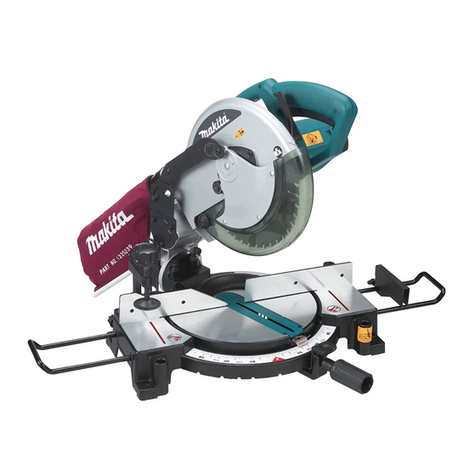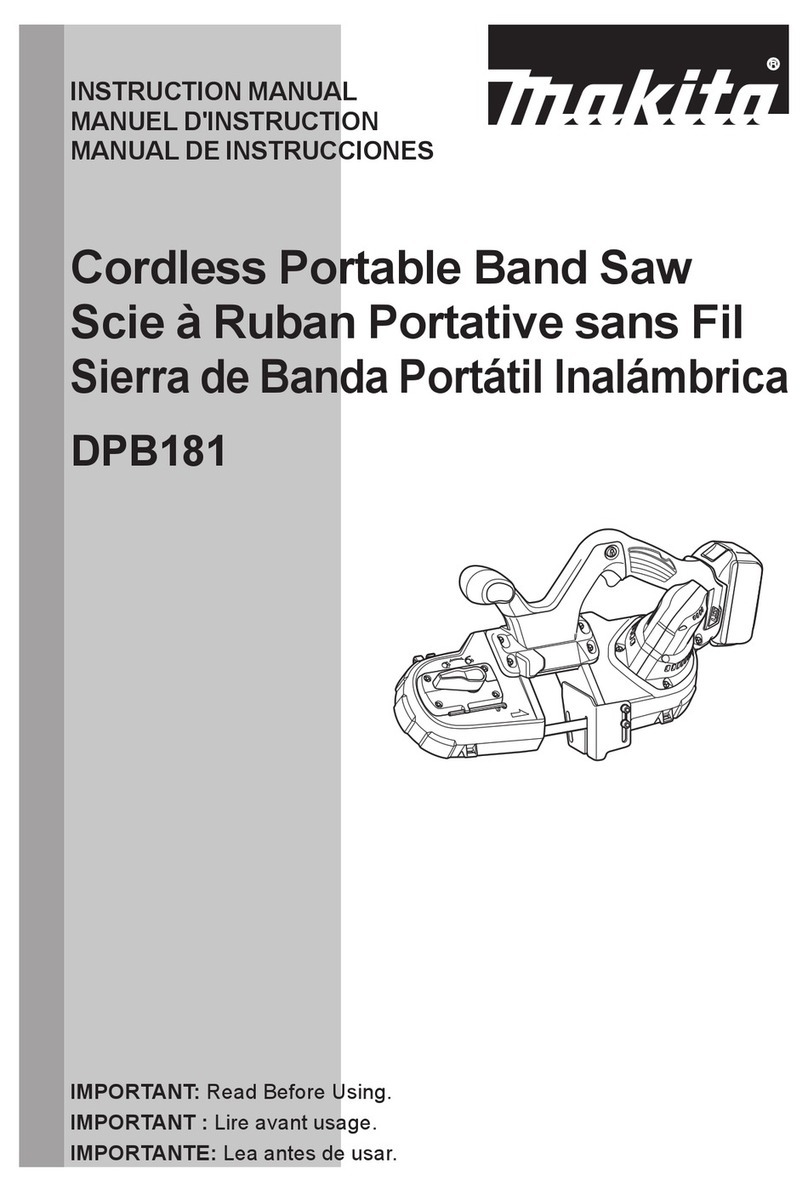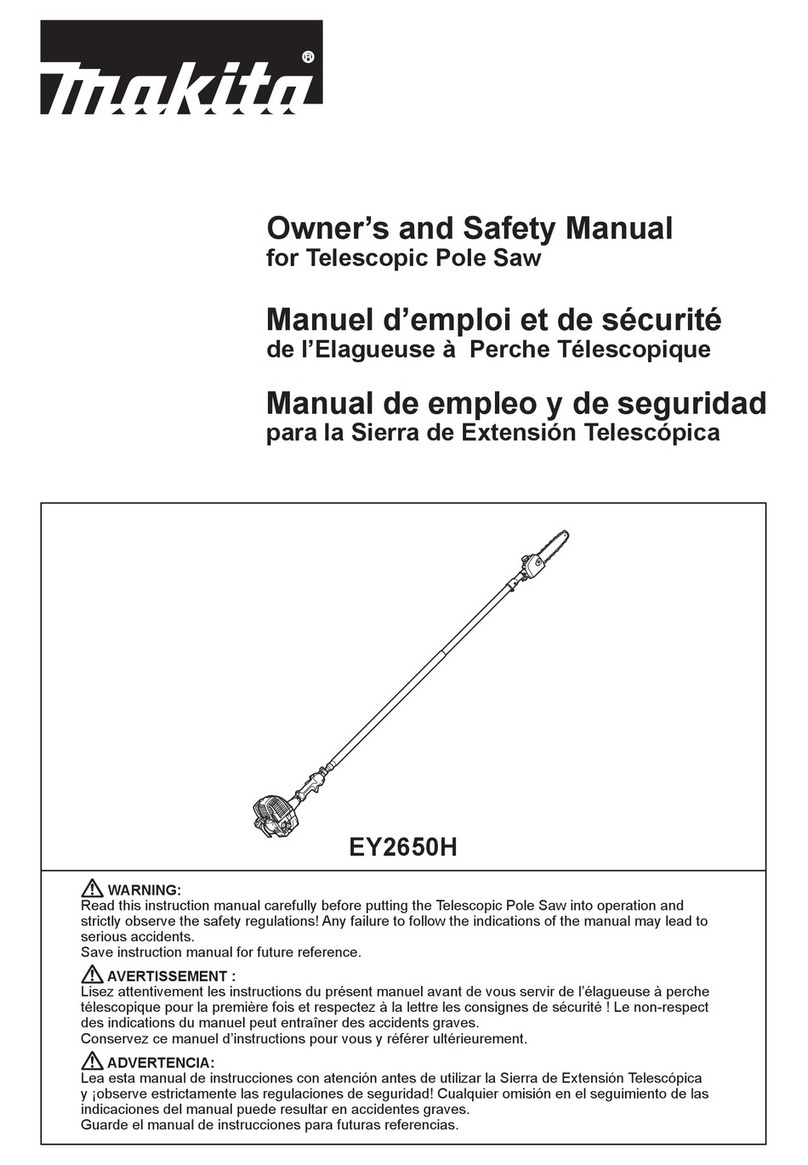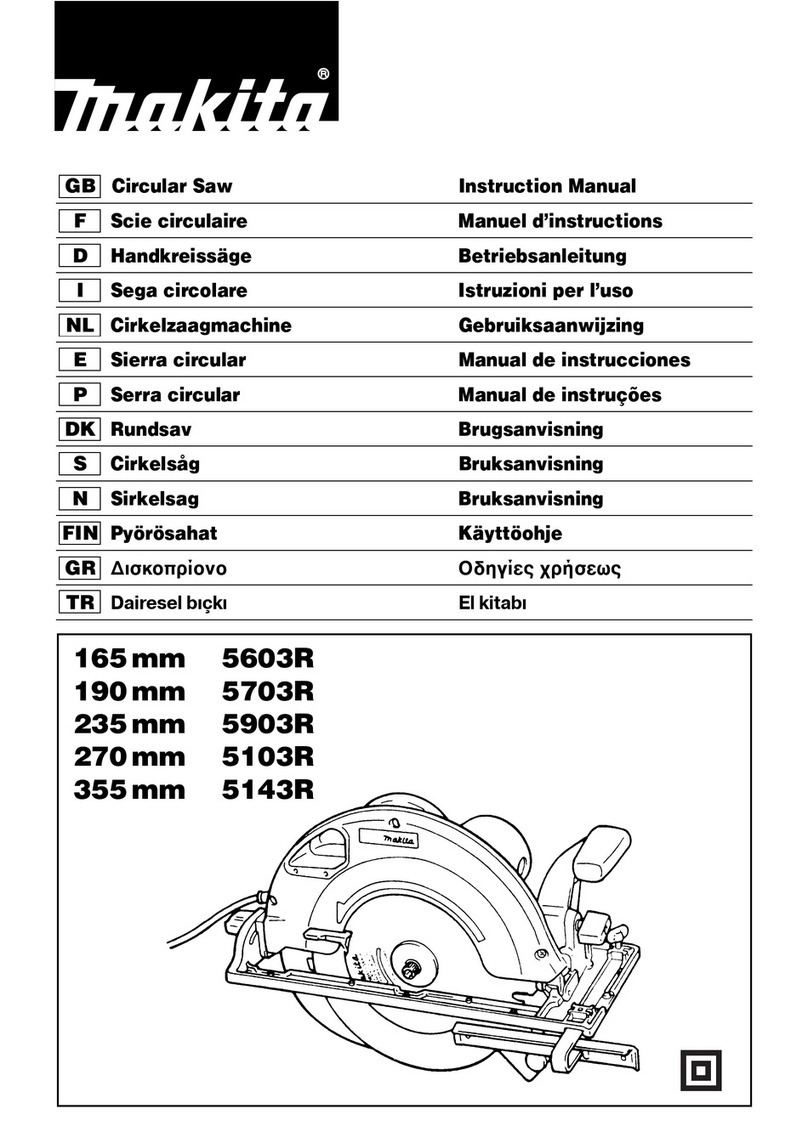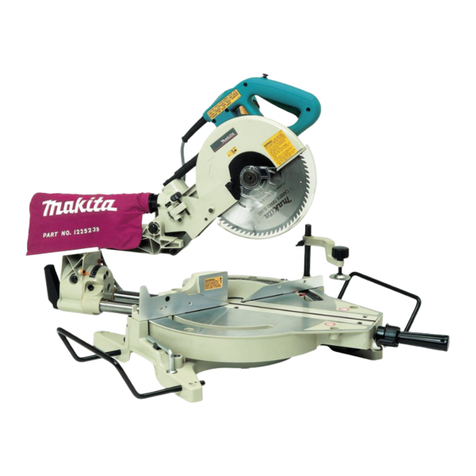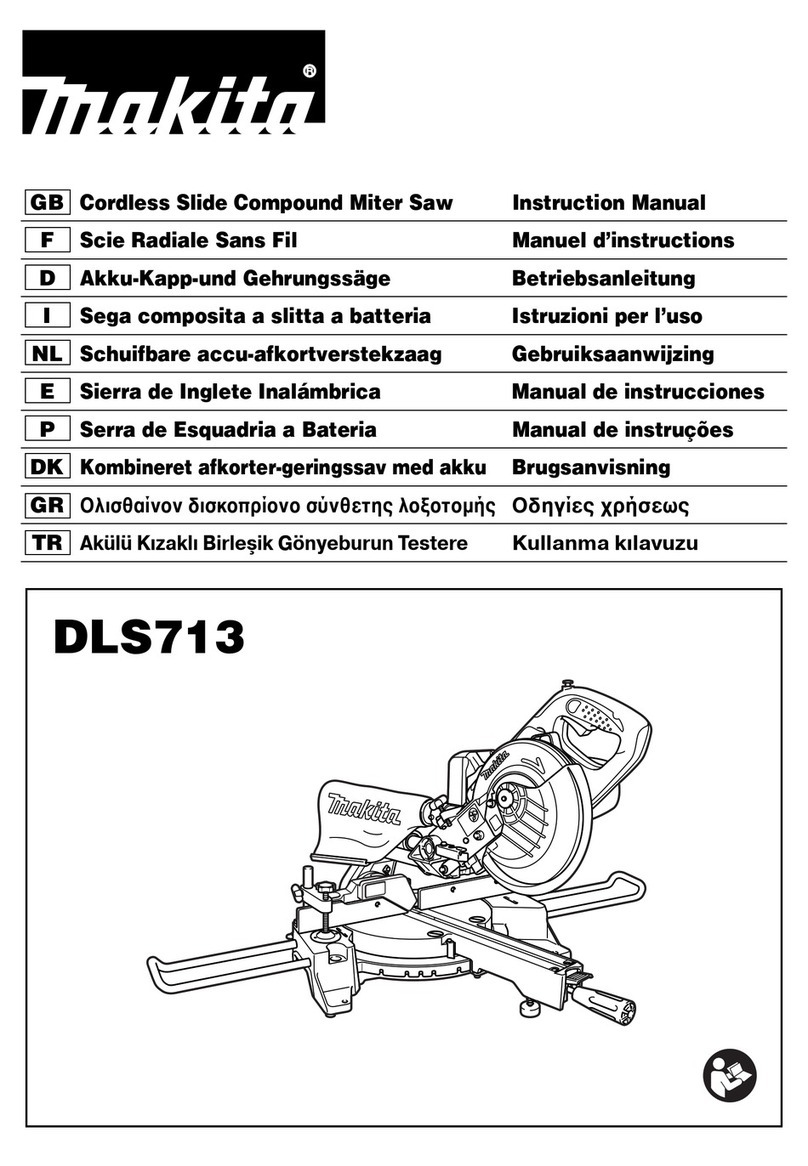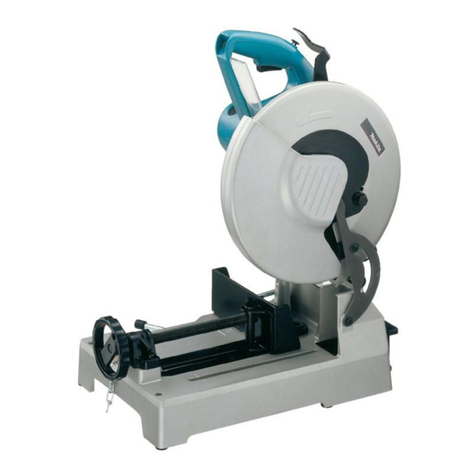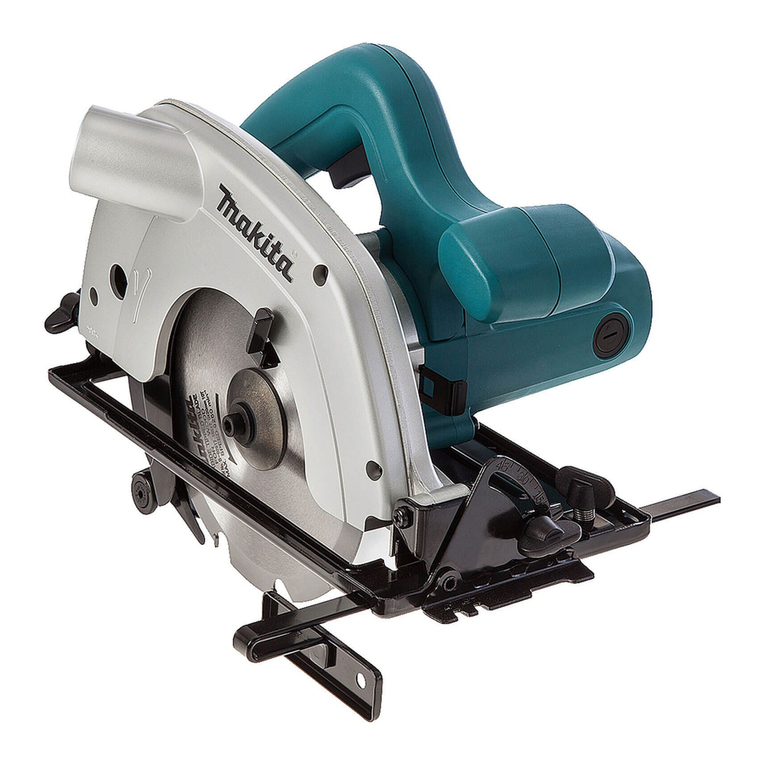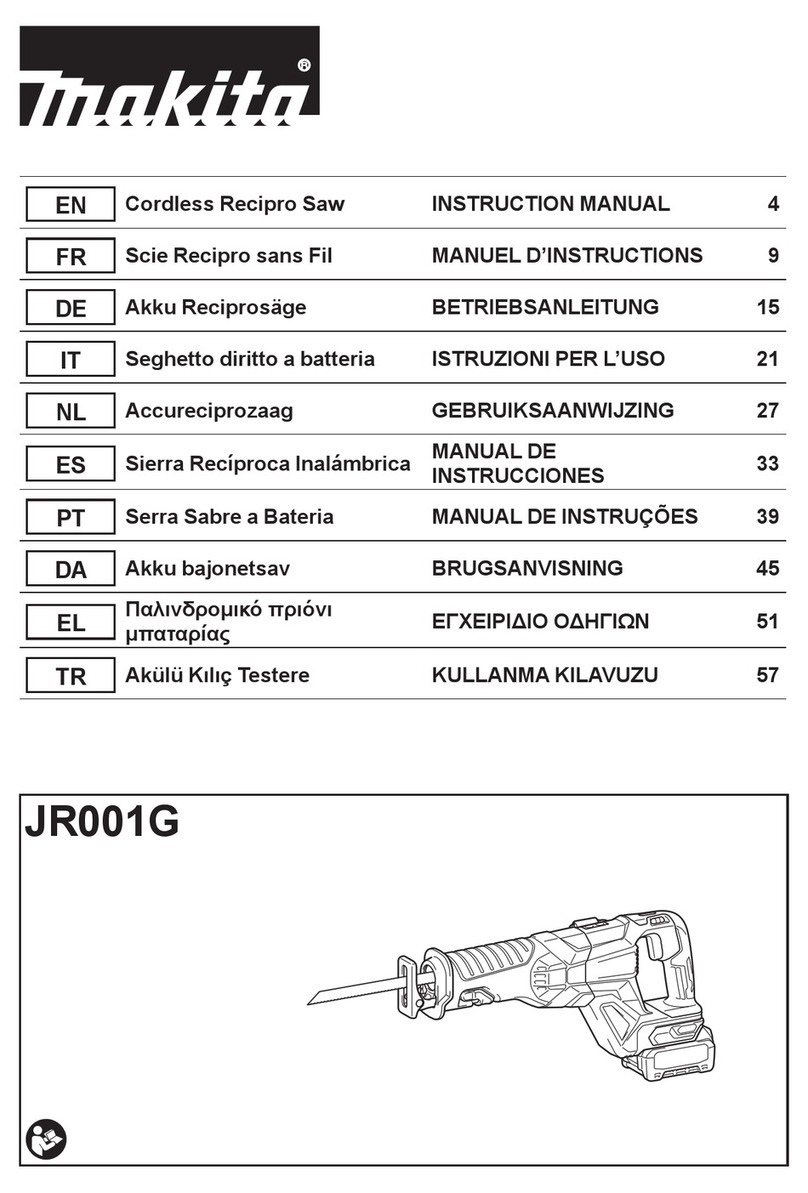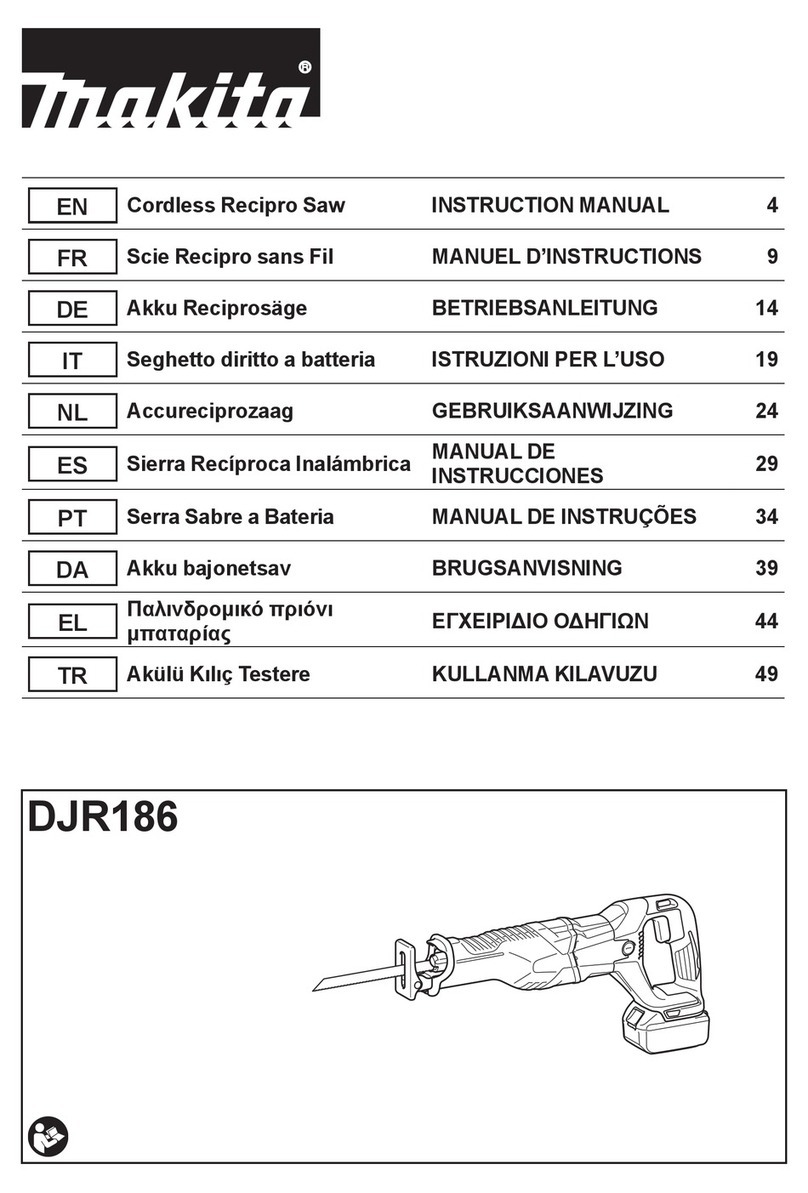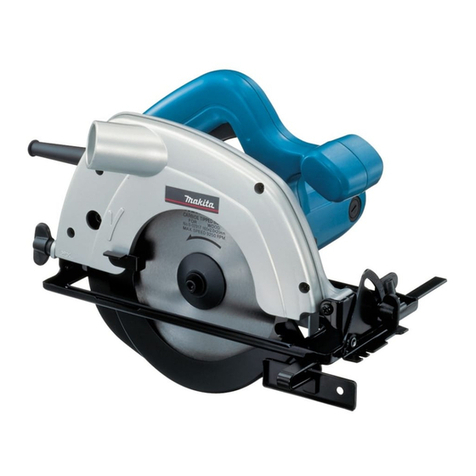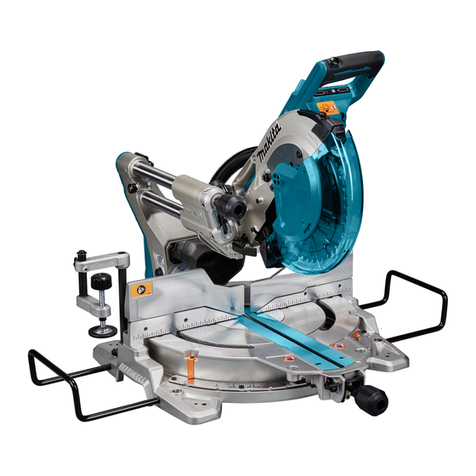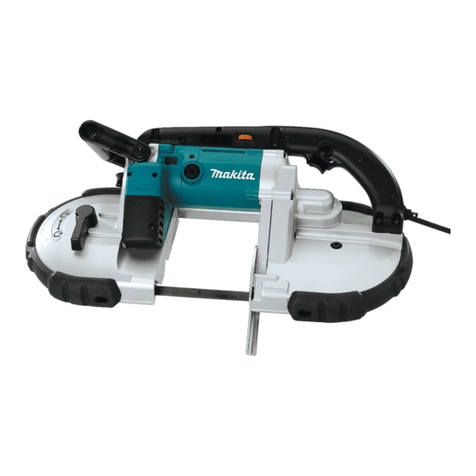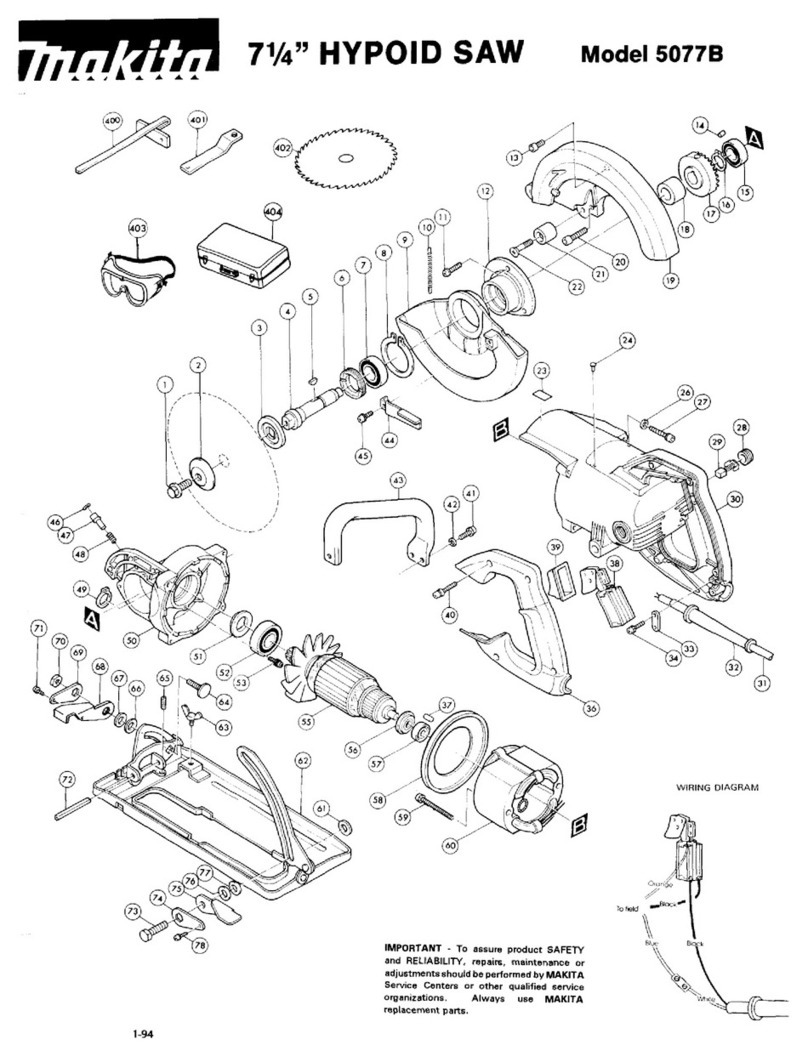
6ENGLISH
NOTE: The declared vibration total value(s) has been
m e a s u r e d i n a c c o r d a n c e w i t h a s t a n d a r d t e s t m e t h o d
and may be used for comparing one tool with another.
NOTE: The declared vibration total value(s) may also
be used in apreliminary assessment of exposure.
WARNING: The vibration emission during
actual use of the power tool can dier from the
declared value(s) depending on the ways in which
the tool is used especially what kind of workpiece
is processed.
WARNING: Be sure to identify safety mea-
sures to protect the operator that are based on an
estimation of exposure in the actual conditions of
use taking account of all parts of the operating
cycle such as the times when the tool is switched
o and when it is running idle in addition to the
trigger time).
EC Declaration of Conformity
For European countries only
The EC declaration of conformity is included as Annex A
t o t h i s i n s t r u c t i o n m a n u a l .
SAFETY W ARNINGS
eneral power tool safety warnings
WARNING: Read all safety warnings, instruc-
tions, illustrations and specications provided
with this power tool. F a i l u r e t o f o l l o w a l l i n s t r u c t i o n s
listed below may result in electric shock, re and/or
serious injury.
Save all warnings and instruc-
tions for future reference.
T h e t e r m " p o w e r t o o l " i n t h e w a r n i n g s r e f e r s t o y o u r
mains-operated (corded) power tool or battery-operated
( c o r d l e s s ) p o w e r t o o l .
Cordless Portable Band Saw Safety
W arnings
1. Hold power tool by insulated gripping sur-
faces, when performing an operation where
the cutting accessory may contact hidden
wiring. C u t t i n g a c c e s s o r i e s c o n t a c t i n g a " l i v e "
w i r e m a y m a k e e x p o s e d m e t a l p a r t s o f t h e p o w e r
t o o l " l i v e " a n d c o u l d g i v e t h e o p e r a t o r a n e l e c t r i c
s h o c k .
2. Use only blades which are listed in
“ SPECIFICATIONS” .
3 . Check the blade carefully for cracks or damage
before operation. Replace cracked or damaged
blade immediately.
4. Secure the workpiece rmly. When cutting a
bundle of workpieces, be sure that all work-
pieces are secured together rmly before
cutting.
5. Cutting workpieces covered with oil can cause
the blade to come o unexpectedly. Wipe o
all excess oil from workpieces before cutting.
6. Never use the cutting oil as a cutting lubricant.
Use only Makita cutting wax.
7 . Hold the tool rmly with both hands.
8. Keep hands away from rotating parts.
9. When cutting metal, be cautious of hot ying
chips.
10. Do not leave the tool running unattended.
11. Do not touch the blade or the workpiece imme-
diately after operation they may be extremely
hot and could burn your skin.
12. Before operation, make sure that there is no
buried object such as electric pipe, water pipe
or gas pipe in the working area. O t h e r w i s e , t h e
band saw blade may touch them, resulting an
e l e c t r i c s h o c k , e l e c t r i c a l l e a k a g e o r g a s l e a k .
Important safety instructions for
battery cartridge
1. Before using battery cartridge, read all instruc-
tions and cautionary markings on (1) battery
charger, 2 battery, and 3 product using
battery.
2. Do not disassemble or tamper with the battery
cartridge. It may result in are, excessive heat,
o r e x p l o s i o n .
3 . If operating time has become excessively
shorter, stop operating immediately. It may
result in a risk of overheating, possible burns
and even an explosion.
4. If electrolyte gets into your eyes, rinse them
out with clear water and seek medical atten-
tion right away. It may result in loss of your
eyesight.
5. Do not short the battery cartridge:
( 1) Do not touch the terminals with any con-
ductive material.
( 2) Avoid storing battery cartridge in a con-
tainer with other metal objects such as
nails, coins, etc.
( 3 ) Do not expose battery cartridge to water
or rain.
A battery short can cause a large current
ow, overheating, possible burns and even a
breakdown.
6. Do not store and use the tool and battery car-
tridge in locations where the temperature may
reach or exceed 0 C 22 F.
7 . Do not incinerate the battery cartridge even if
it is severely damaged or is completely worn
out. The battery cartridge can explode in a re.
8. Do not nail, cut, crush, throw, drop the battery
cartridge, or hit against a hard object to the
battery cartridge. S u c h c o n d u c t m a y r e s u l t i n a
re, excessive heat, or explosion.
9. Do not use a damaged battery.
10.
The contained lithium-ion batteries are subject to
the Dangerous Goods Legislation requirements.
For commercial transports e.g. by third parties,
f o r w a r d i n g a g e n t s , s p e c i a l r e q u i r e m e n t o n p a c k -
aging and labeling must be observed.
